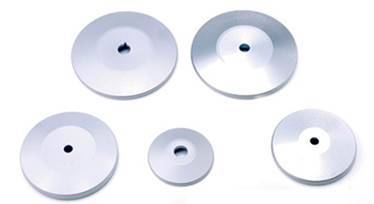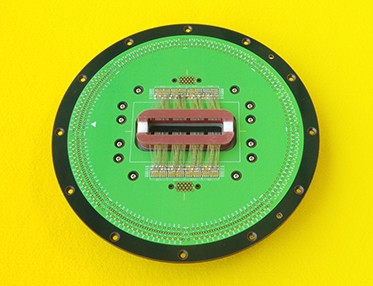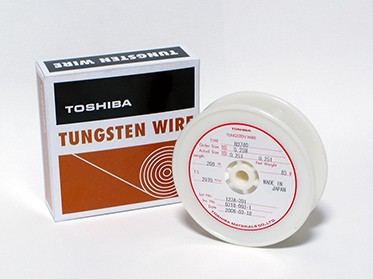Rhenium-Tungsten Parts
If you have any inquiries, please contact us.
- Tokyo+81-3-3457-4874
Open 9:00am-5:00pm (business days)
Contact UsRhenium-tungsten (Rheni-tung) Targets (Rotating Anodes)
Tungsten has a high melting point and generates X-rays when irradiated with a high-speed electron beam. Because of these properties, it is used as an X-ray source for various X-ray tubes used in medical and security devices.
Toshiba Materials produces targets with Rheni-tung, an alloy that is extremely strong and tough (resistant to cracking and swelling). These include standard Rheni-tung targets in which Rheni-tung is combined with a molybdenum alloy, and Rheni-tung/graphite targets in which some of the molybdenum alloy is replaced with graphite for a lighter weight. These targets are used for medical X-ray tubes.

Features
- Strong and compatible with high-output electron beams
- High precision; shafts will not lose precision at high rotations
- High strength, toughness and heat resistance
Product specifications
We draw on our wealth of knowledge to meet a wide range of requests.
Target of other materials
Examples of uses
- Medical X-ray tubes (standard X-ray tubes, X-ray tubes for CT scanners, X-ray tubes for circulation devices)

Probe Pins
Tungsten is a strong, wear-resistant metal that is used make probe pins (contact pins) for inspecting high-density integrated circuits in parts such as semiconductors and liquid crystal panels. Toshiba Materials has developed Rheni-tung, an alloy in which rhenium is added to tungsten to further improve its properties. It has high strength and high conductivity, and at the same time, it has a smooth pin tip due to trace element control technology, making it suitable for probe pins.

Features
- Outstanding electrical conductivity, strength and wear resistance
- Extremely smooth pinpoint surface
Product specifications
Product name and materials
| Products name | Types of materials |
|---|---|
| H30 | 3% rhenium-tungsten |
| H37 | 3% rhenium-tungsten |
| H36 | 26% rhenium-tungsten |
| W31 | Pure tungsten |
Standard size, surface treatment
- Standard size, surface treatment
- Diameter: dia 0.005 - dai 0.5 x L (mm)
- Surface treatment
- Electrolytic polishing
- Gold or nickel plating (full or partial)
Examples of uses
- Inspection of high-density integrated circuits in parts such as semiconductors and liquid crystal panels
Rhenium-Tungsten (Rheni-tung) Wires
Rhenium and tungsten have different electrical resistance and mechanical properties, and the electrical resistance and mechanical properties of the Rheni-tung alloy change depending on the amount of rhenium added to tungsten. Toshiba Materials has a lineup of wires that can be applied to various applications by taking advantage of the characteristics of tungsten.

Features
- Homogeneous and highly functional with few cracks
- Wide range of wires with a variety of properties
Product specifications
Material
| Re (wt%) |
K (ppm) |
Fe (ppm) |
Mo (ppm) |
W* (wt%) |
Features | |
|---|---|---|---|---|---|---|
| H30 | 3 | ≤ 100 | ≤ 30 | ≤ 50 | ≥ 99.95 | Outstanding non-sag properties due to addition of doping material |
| H36 | 26 | ≤ 5 | ≤ 30 | ≤ 50 | ≥ 99.95 | High quantity of rhenium has been added for high electrical resistance and mechanical strength |
| H37 | 3 | ≤ 5 | ≤ 30 | ≤ 50 | ≥ 99.95 | Ideal for probe pins for purposes such as semiconductor inspections |
| H38 | 5 | ≤ 100 | ≤ 30 | ≤ 50 | ≥ 99.95 | Used on the + (positive) side of thermocouples |
| H39 | 26 | ≤ 5 | ≤ 30 | ≤ 50 | ≥ 99.95 | Used on the - (negative) side of thermocouples |
*: Purity of tungsten excluding rhenium
- Sizes: Inquire for details
Examples of uses
- Probe pins
- Various inspection tools
- Display tubes
- Electron tube heaters
- Thermocouples







